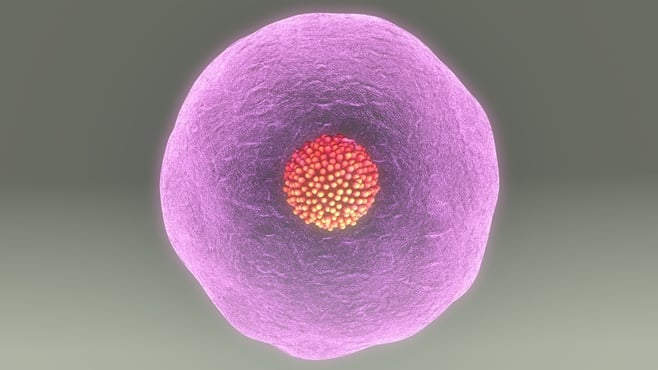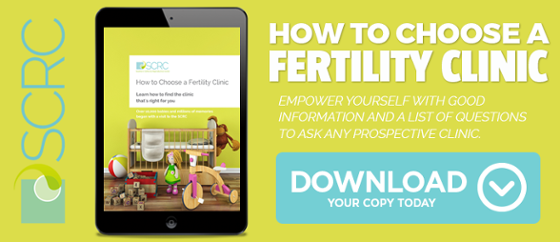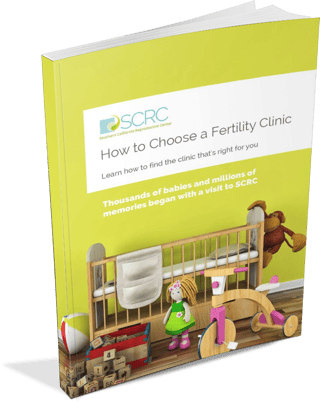
The embryo transfer procedure is the final step of the IVF process. You have been through the weeks of medications, the monitoring, and the egg retrieval, and the resulting embryos have been cultured in the lab for three to six days until they are ready to be transferred to your uterus. If your embryos were frozen, either to give your body a rest before transfer or because they were left over from an earlier cycle, they will be carefully thawed before the procedure.
For many patients, this is the most exciting and the most emotional moment of an IVF cycle. While the anticipation and hope may be at its highest at this point, it can be tough to feel that there is nothing more you can do to better your chances of becoming pregnant. So much preparation and has led up to this procedure, and now the difficult task of waiting to discover if the embryo has implanted begins.
Understanding what to expect and how to take care of yourself at this time can help to calm your nerves in the days leading up to your official pregnancy test.
How does an embryo transfer work?
The embryo transfer is a relatively easy and simple process. Unlike the egg retrieval procedure, you probably will not require any anesthetic or sedation, and you can expect to be discharged within 2 to 4 hours. Either fresh or frozen embryos may be used: studies suggest that success rates and outcomes using previously frozen embryos are at least as good as transfers using fresh embryos, or even a little better.
Guided by an ultrasound, your doctor will use a fine transfer catheter to move the embryos through the vagina and cervix into the uterus. Once the transfer has occurred, you will rest on your back for 30 minutes to one hour in the recovery room, before being released. Most patients take the rest of the day off to relax at home.
Embryo transfer is a very safe and routine procedure, and side effects are rare, although you may experience some mild cramping. Some patients may be sent home with a prescription for supplemental progesterone to support the possible early pregnancy.
What happens after the transfer?
Some doctors recommend bed rest for 24 hours, but there is no evidence to suggest that this is necessary. Other sources suggest that you resume normal activities, as moving around may enhance blood flow to the uterus. Truthfully, it probably does not matter very much which you decide to do: listen to your body and do what feels right. If you feel tired, give yourself some time to relax. If you feel anxious and want to move, a gentle walk can help to relieve stress.
There is usually a two week wait between the transfer and your first pregnancy test. Patience is difficult at this stage, when your mind is constantly asking whether you are pregnant, but taking a home pregnancy test (HPT) too early can give misleading results.
The hormone used to trigger ovulation just before the egg retrieval, hCG, is the same hormone used to measure pregnancy in HPTs. It may linger in your bloodstream for some time and can give a false positive, which can be emotionally very difficult. On the other side of the scale, in very early pregnancy your natural hCG may be too low to register on the test, producing a false negative and causing unnecessary distress.
During this two week wait, you may experience symptoms that feel as if you are about to start your period.
Symptoms that may occur:
- Slight bloating
- Fatigue
- Mood swings
- Sore breasts
- Light spotting
It is very difficult to determine whether these are premenstrual symptoms or early pregnancy symptoms, and it is possible to drive yourself to distraction trying to interpret them one way or the other.
The hard truth is that all you can do is wait. If any of these symptoms become severe, or if you begin to experience shortness of breath, chest pain, or lower abdominal pains, you should contact your clinic immediately.
Are there any precautions I can take after transfer to improve my chances of implantation?
At this point, you have done everything possible towards a good outcome. During these two weeks, the most important thing is to take it easy. Get plenty of sleep, and make sure you avoid any potentially harmful substances, such as caffeine, alcohol, and tobacco. Abstaining from vigorous exercise and sexual intercourse is recommended for most patients during this time, as either can cause uterine contractions, and because your ovaries are still likely to be slightly enlarged and tender and should be protected to prevent complications such as ovarian torsion (when an ovary becomes twisted.)
You should make sure that you are eating a healthy diet, as if you were already pregnant, with plenty of protein, fiber, and vegetables, and avoiding risky foods such a soft cheeses and seafood high in mercury. Above all, make sure that you have a source of emotional support during this stressful time. Whether you turn to your partner, friends, family, a therapist or support group, or even an online community, having people to talk to can help pass the time and relieve some of the stress of waiting.
What comes next?
Approximately two weeks after the transfer, your clinic will have you come in for a blood test to determine whether you are pregnant.
If the test is positive, you will usually stay under the care of your fertility team until you are eight to ten weeks pregnant. They will monitor your developing pregnancy with blood tests and ultrasounds until you are ready to transfer your care to a regular OB.If the test is negative, you will meet with your doctor to regroup and plan your next steps.
Some patients and doctors prefer to wait out a cycle before trying again, while others are happy to resume treatment almost immediately.
Share this on social media:





